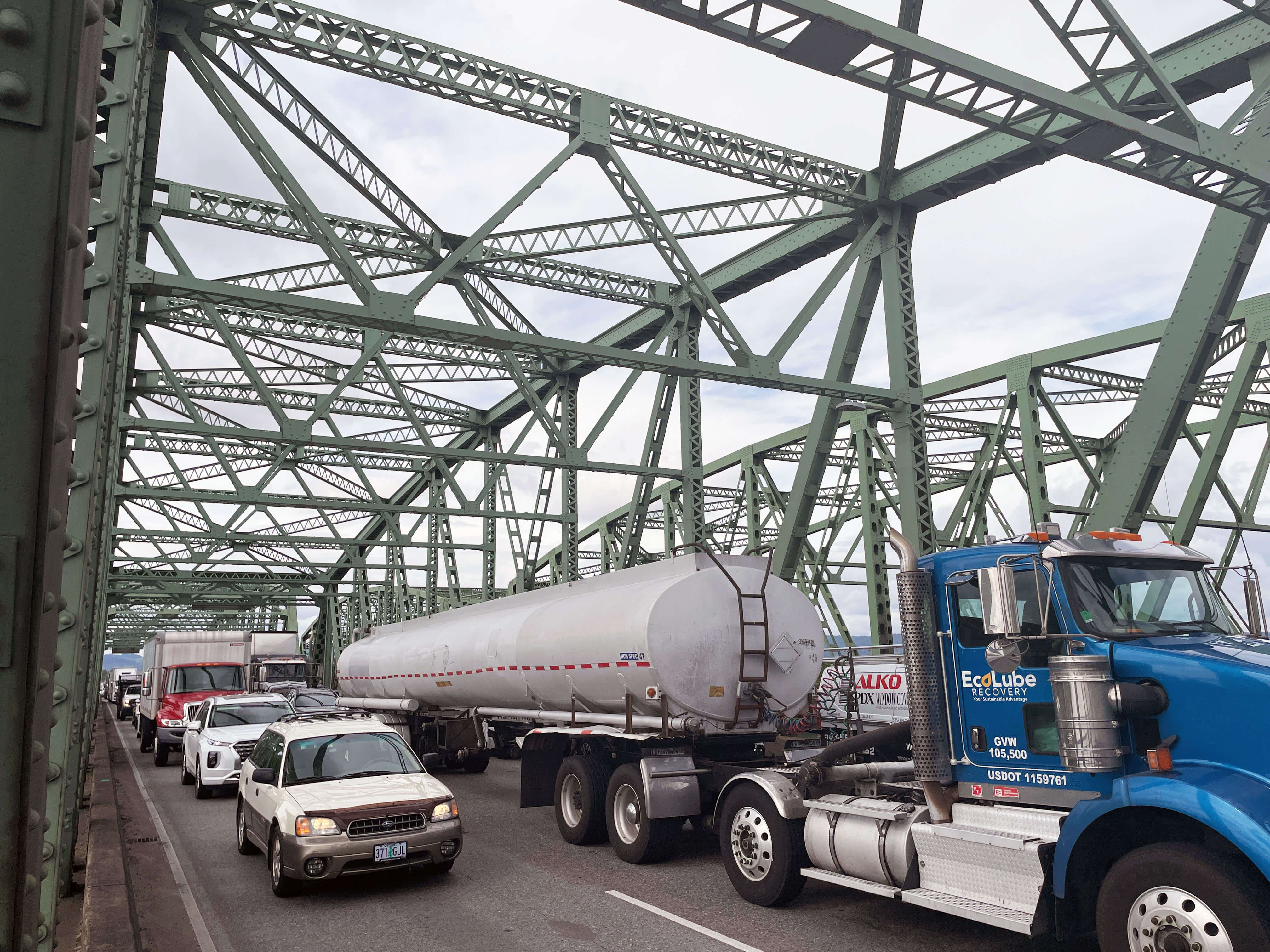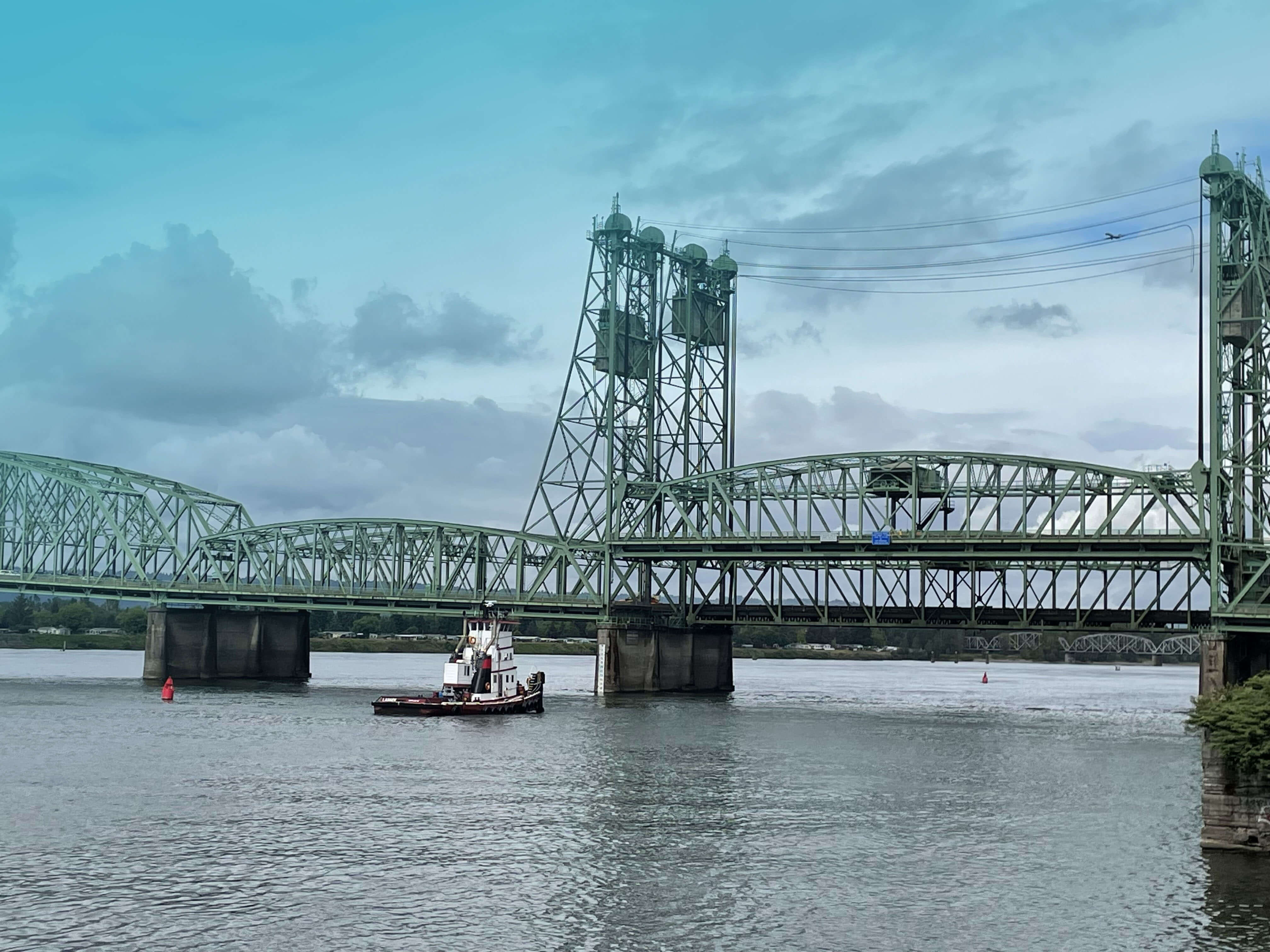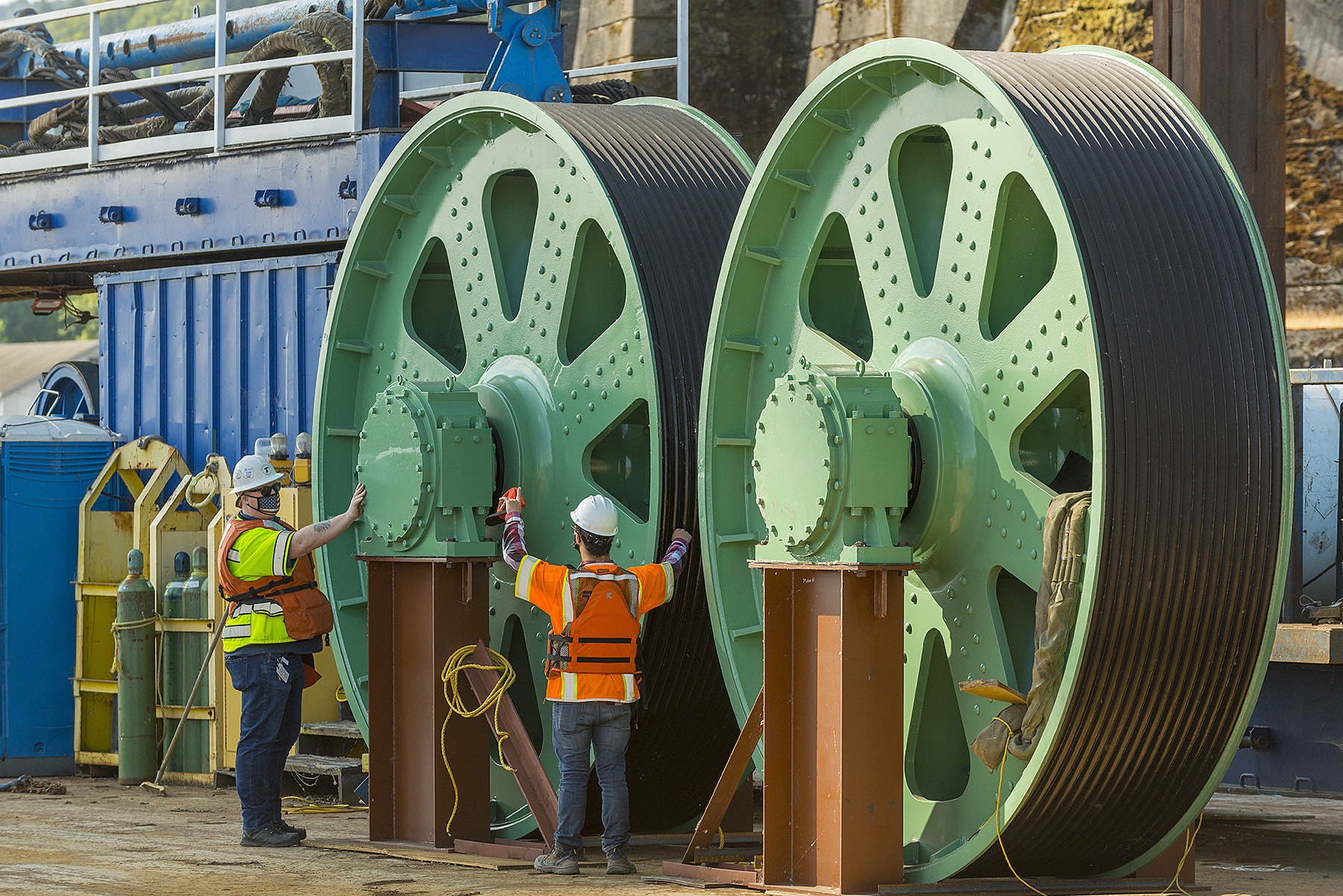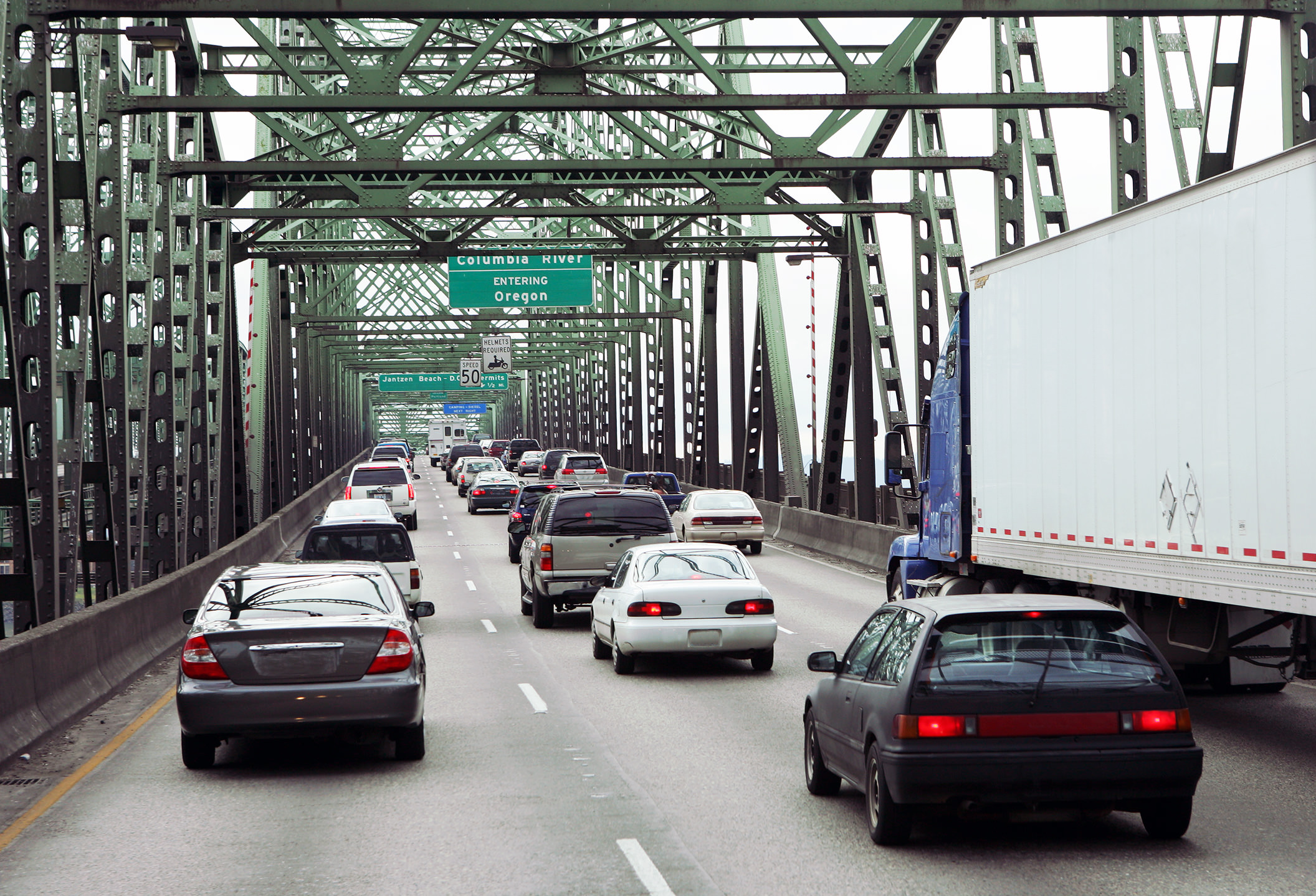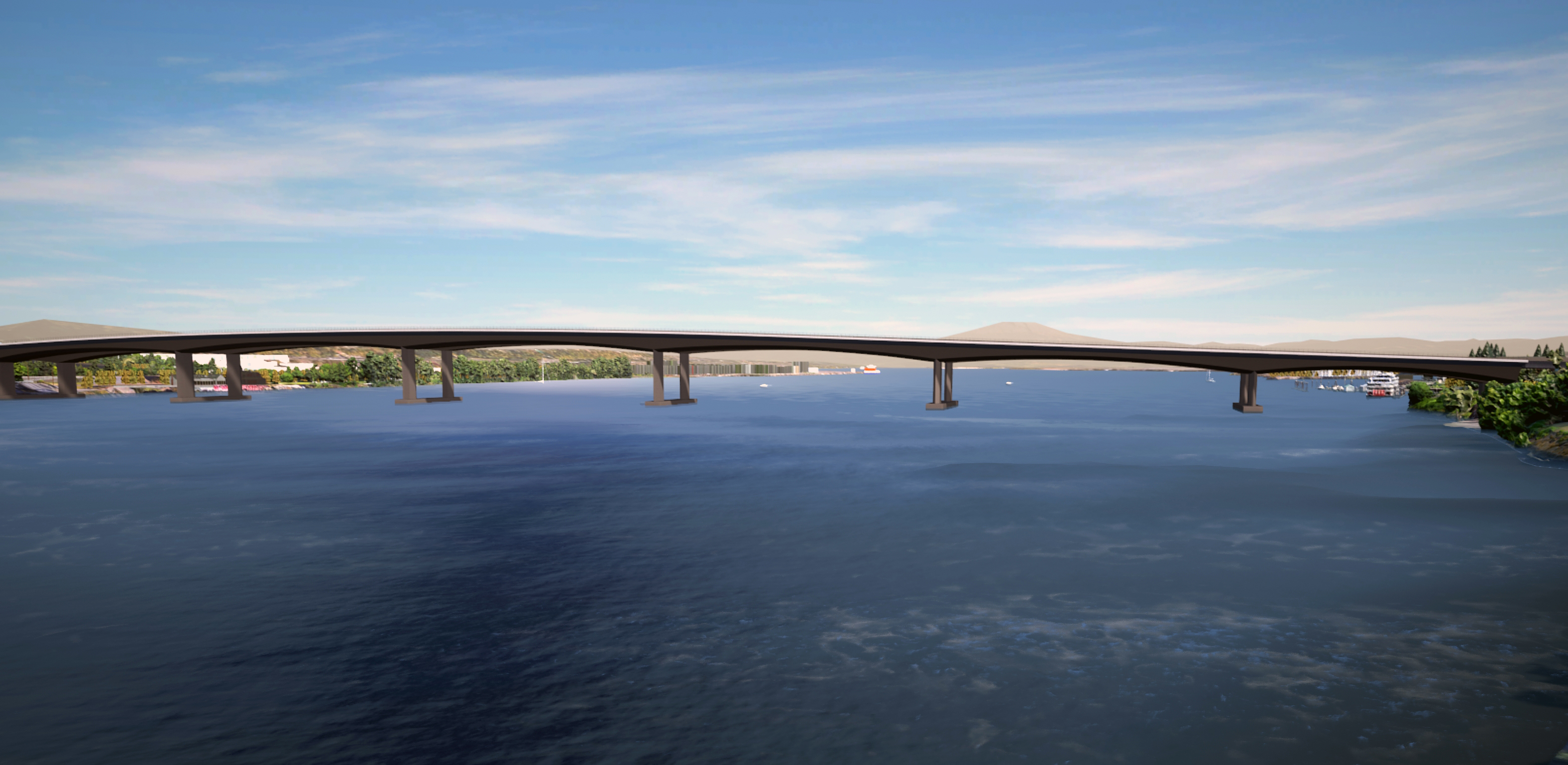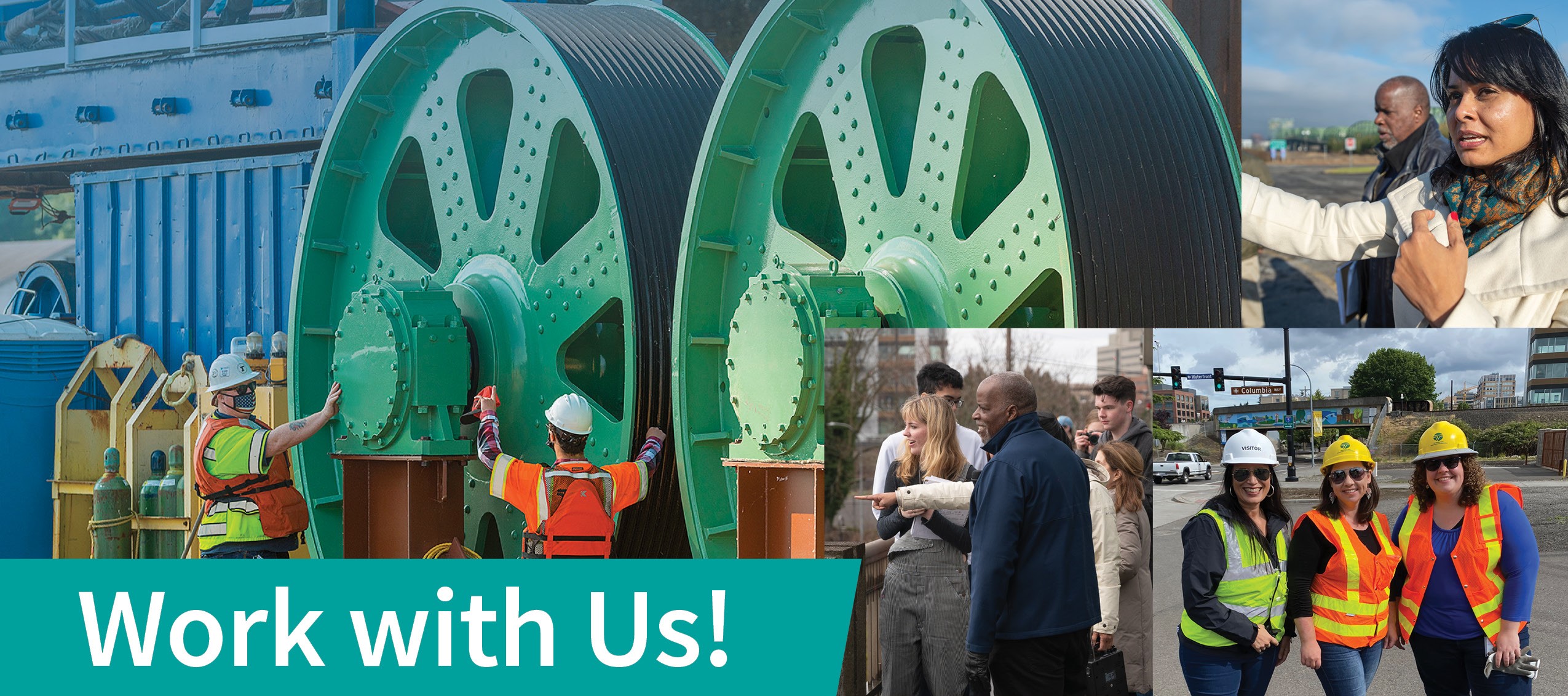Q: Why not build a tunnel instead?
A.
A tunnel cannot be feasibly built within the footprint of I-5 without eliminating important connections to Hayden Island, downtown Vancouver and SR-14. It also comes with significantly more operational, environmental and historical resource impacts, and would cost more than a replacement bridge.
For more information about the suitability of an immersed tube tunnel, view the Tunnel Concept Assessment.
Q: How will the IBR Program address challenges posed by the current bridge on freight mobility?
A.
IBR Program investments will improve freight mobility through interchange design improvements, integration of ramp-to-ramp connections (auxiliary lanes), extension of light rail across the river, and improved bicycle and pedestrian facilities. Interchange improvements and auxiliary lanes can help freight move through the corridor more safely and efficiently compared to current conditions. Extending light rail across the river and improving active transportation options will provide travelers with more options to get across the river. With fewer cars on the road, additional space to merge safely, and thoughtful design considerations, freight can experience improved travel times and reliability.
Q: Why a fixed span bridge and not a movable span like the current bridge?
A.
Both a fixed span and movable span bridge are being studied as part of the National Environmental Protection Act (NEPA) process, which requires federally funded projects to assess their benefits and impacts to the developed and natural environments. The Program is pursuing approvals through the U.S. Coast Guard for a fixed span bridge with a height of 116. This would eliminate the lift span that currently exists on the pair of bridges that opened in 1917 (northbound) and 1968 (southbound). The lift span currently opens an average of 250 times per year depending on river levels, with some years as high as 480 times a year. This causes delays and congestion on both sides of the river and reduces the efficient movement of goods and services within the region and more broadly across the country. The proposed fixed span bridge with 116’ of clearance because it best balances the competing needs of air, land, and water travel while minimizing environmental impacts and constraints. Interstate 5 is a critical link for west coast transportation, and a fixed span bridge would better serve the various needs of bridge users whether they’re transporting goods across country or heading to work five miles away.
Q: Would the height of a fixed-span bridge be too steep and dangerous for users?
A.
All designs being studied will make a replacement bridge less steep than what exists today. Grades of both the freeway and bike/pedestrian facilities would meet highway safety and design requirements for freight, other vehicles and active transportation users. Based on preliminary designs, we anticipate that the grade on I-5 mainline would be approximately 4%. The steepest mainline grade in the 5-mile corridor now is 4.7% on the existing bridge. All designs being studied will reduce the grade of the bridge in comparison to the existing structure. The Program will consider all users when making decisions including people who walk, bike or roll on the bridge. The grade of the bike and pedestrian facilities will not exceed 4.5% anywhere in the Program area, which is less than the Americans with Disabilities Act requirements of 5% or less.
Q: Why can’t you retrofit or replace other regional bridges using the money from the IBR Program? Wouldn’t that be a more prudent use of taxpayer dollars?
A.
The IBR Program has secured $2.1 billion of federal funding through the U.S. Department of Transportation Mega grant Program and Federal Highway Administration Bridge Investment Program (BIP). These are highly competitive funds that were awarded specifically for bridge replacement efforts, so they cannot be shifted to other regional priorities. Both states have also committed $1 billion to help meet the needs of travelers in Oregon and Washington. Replacing the 108-year-old Interstate Bridge with a modern, seismically resilient, multimodal corridor is a priority for the region and the nation, as demonstrated by these investments.

